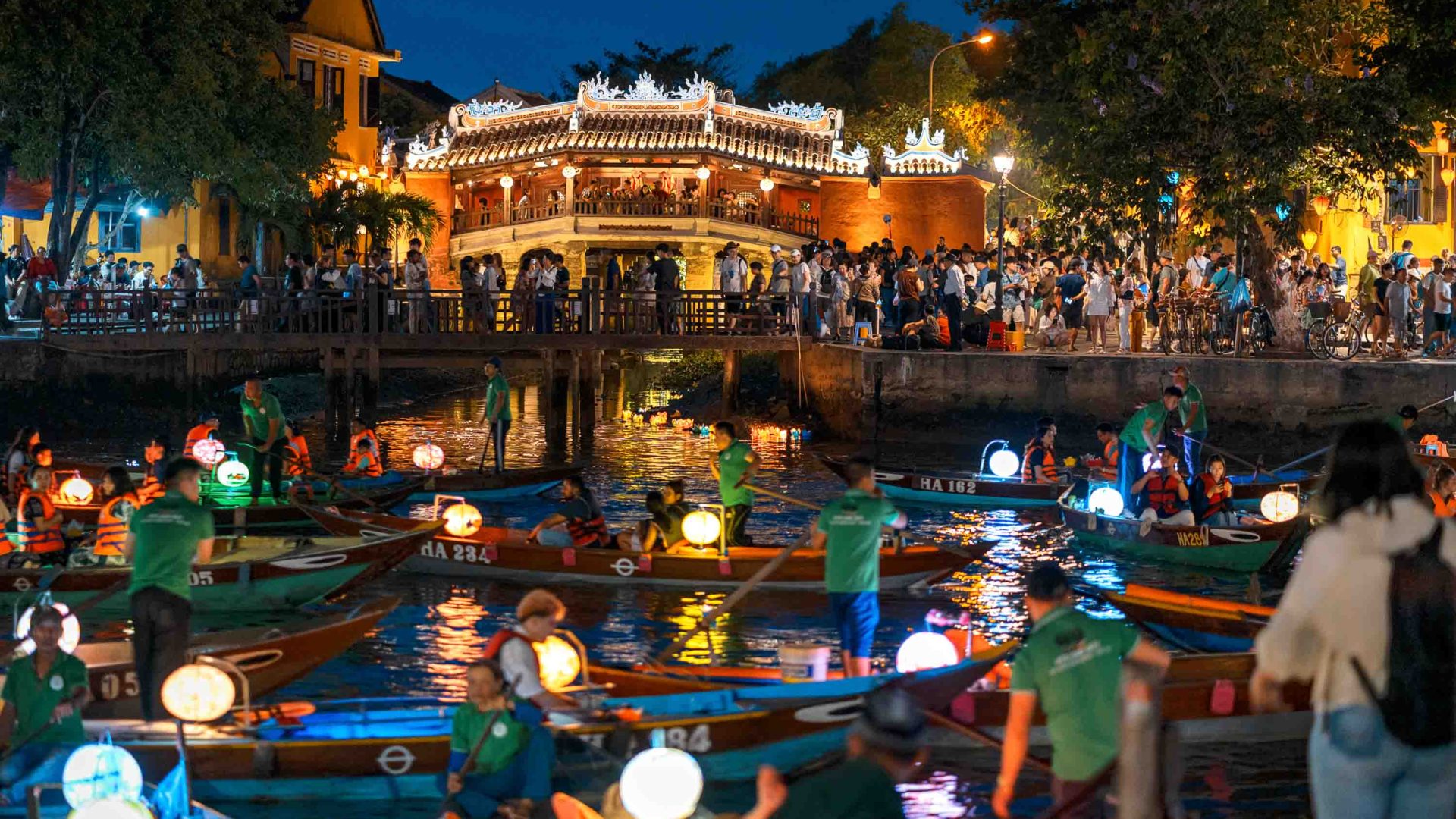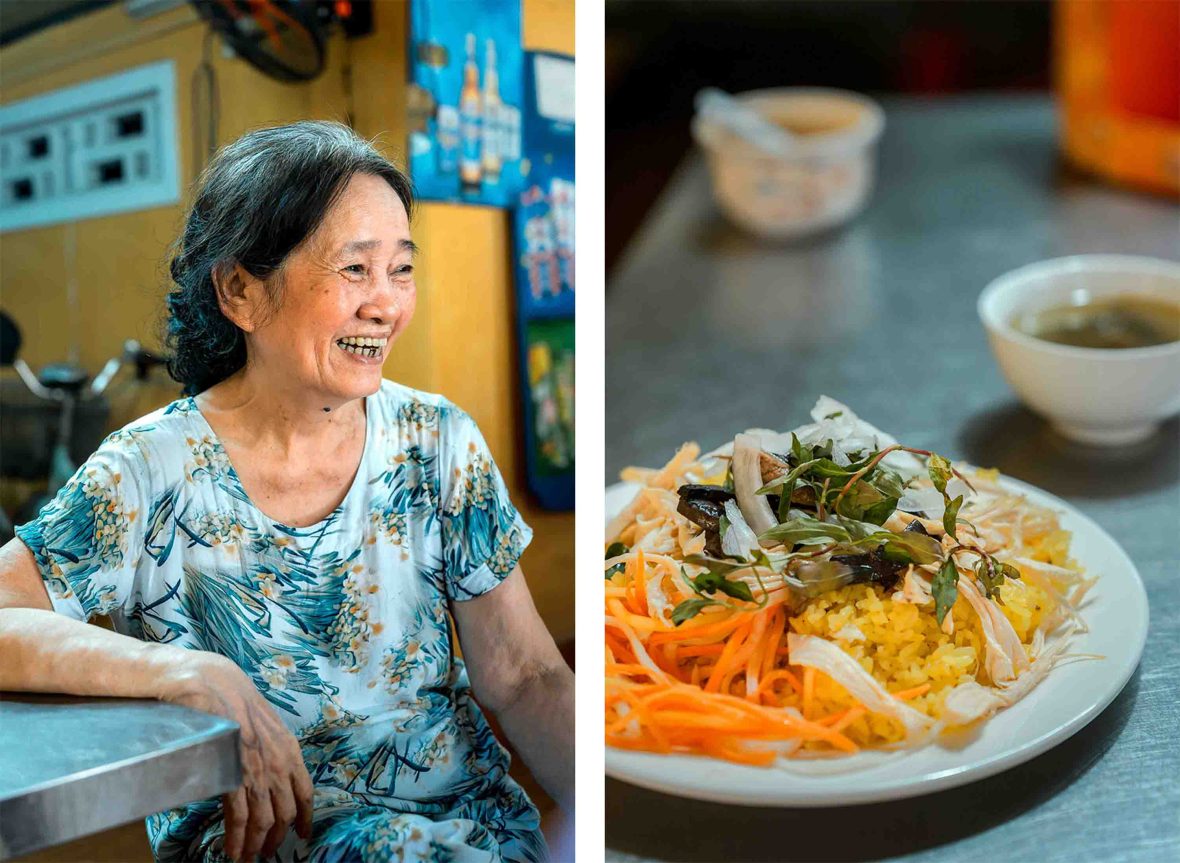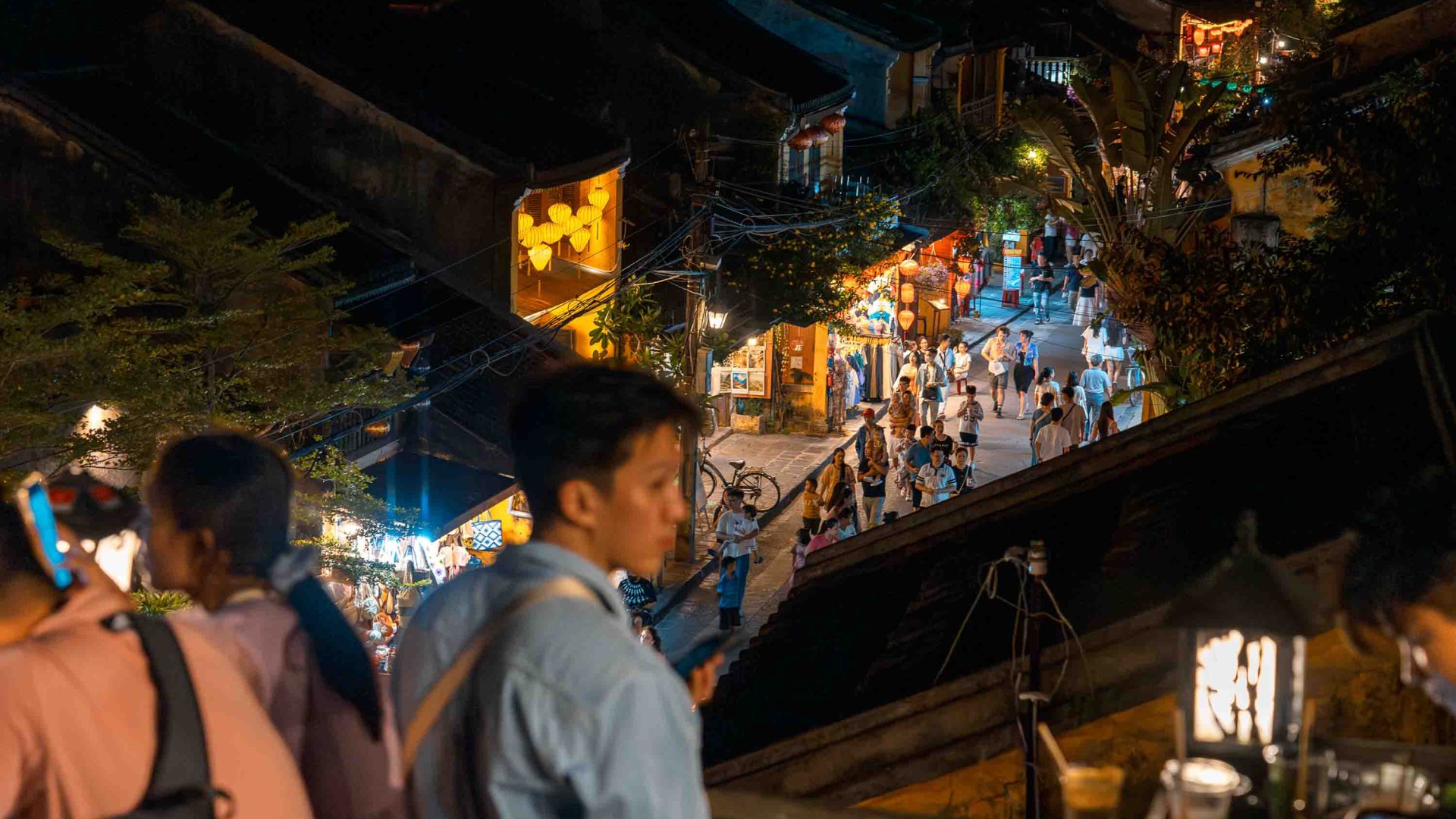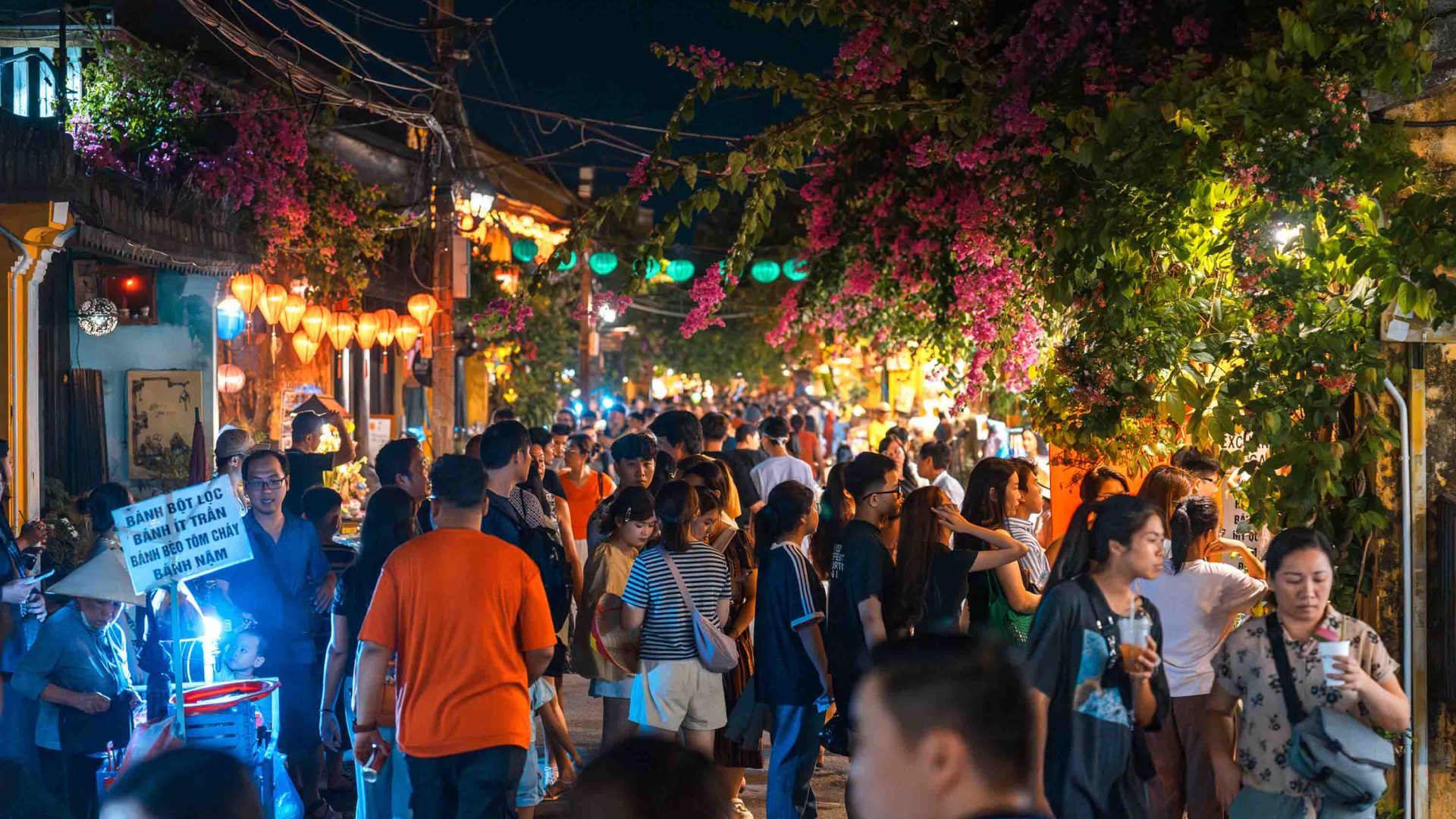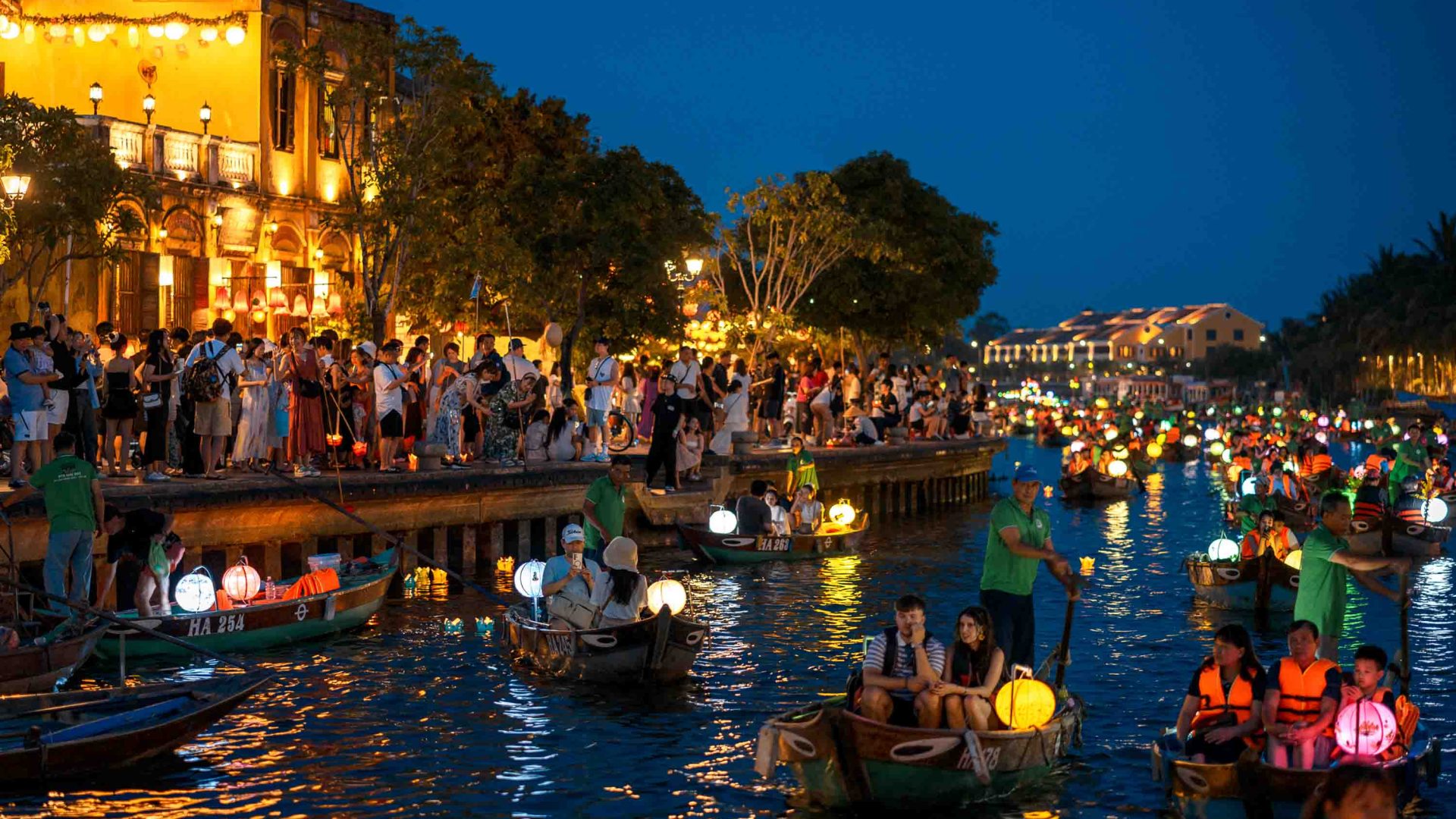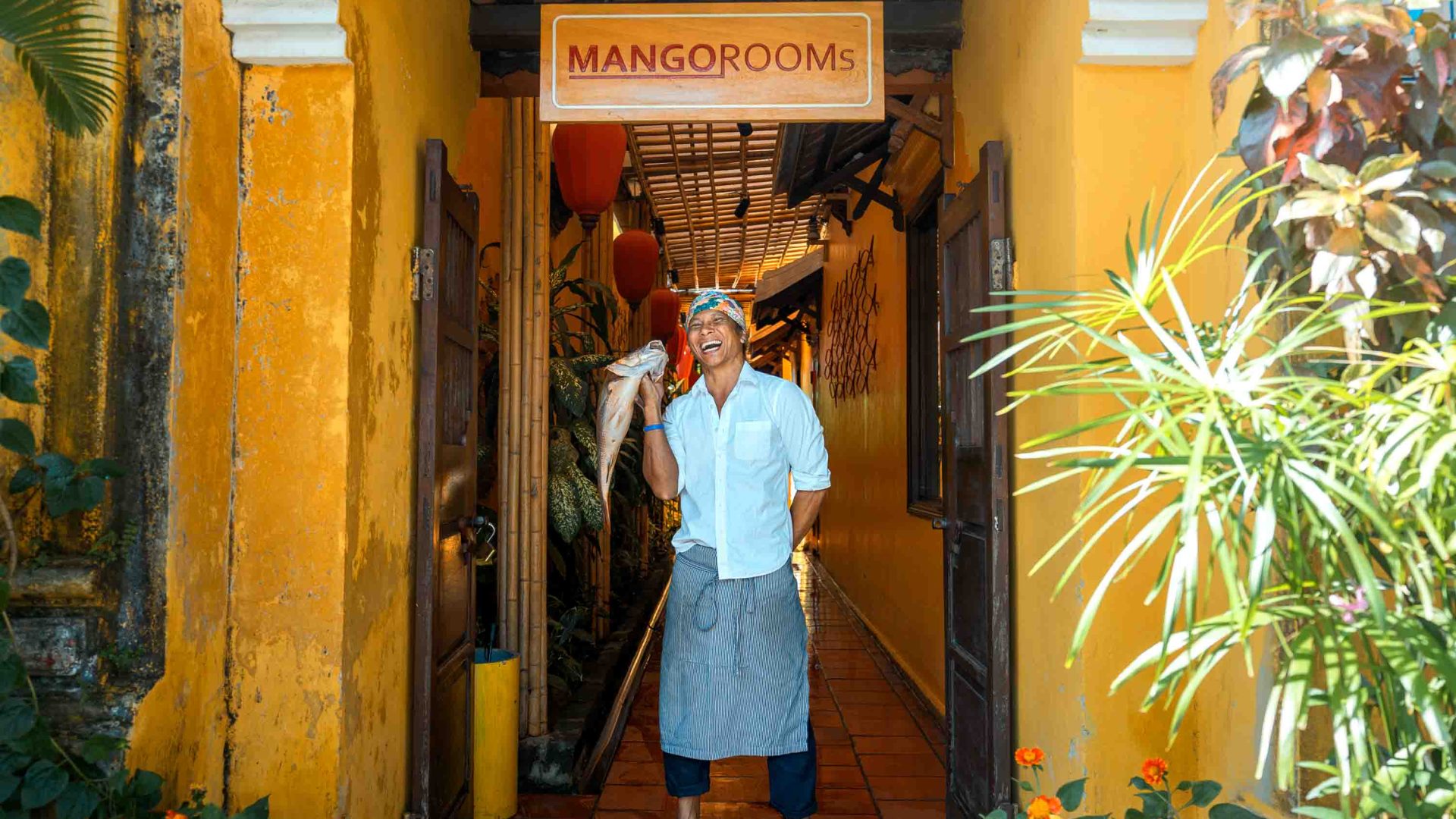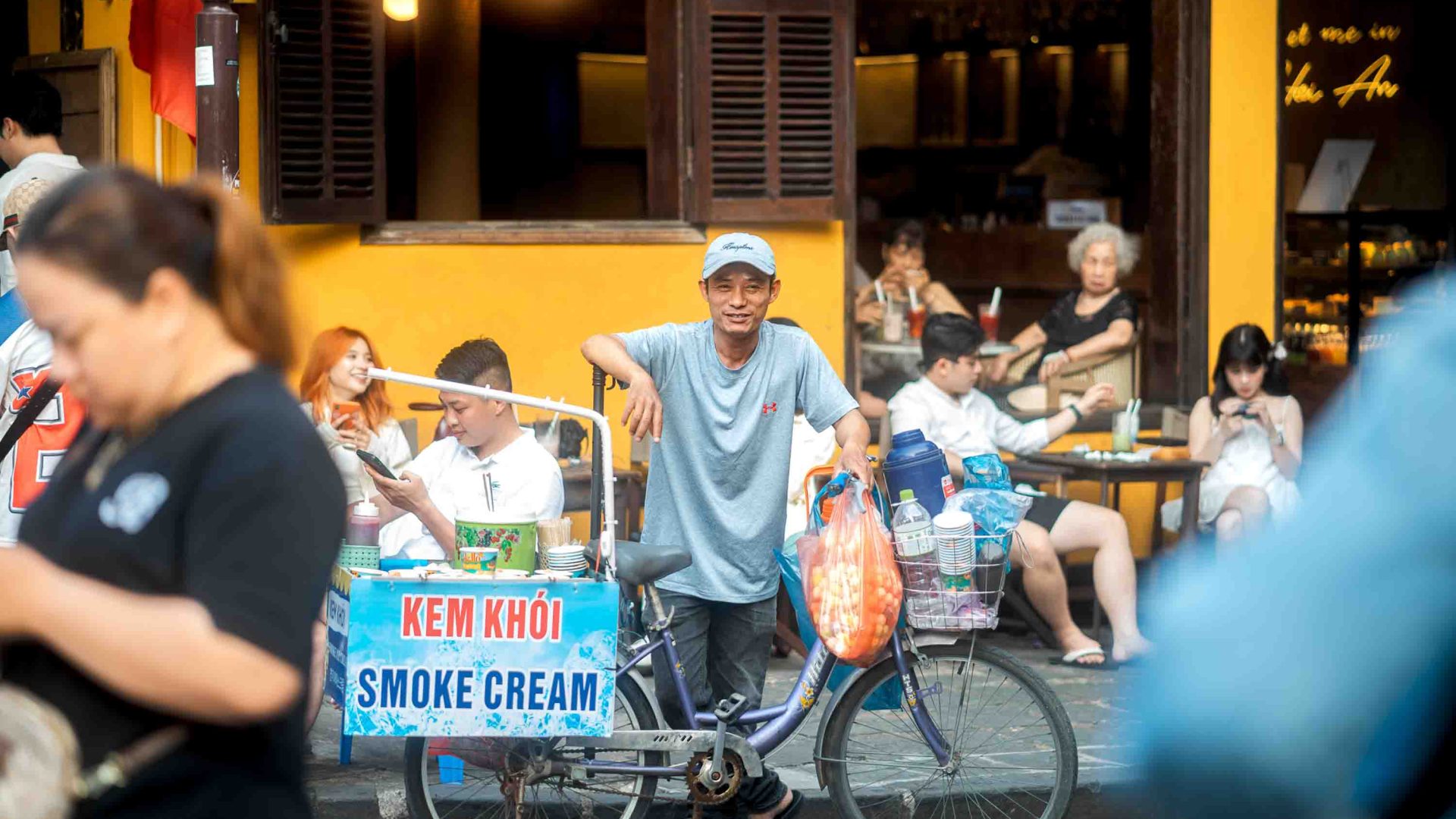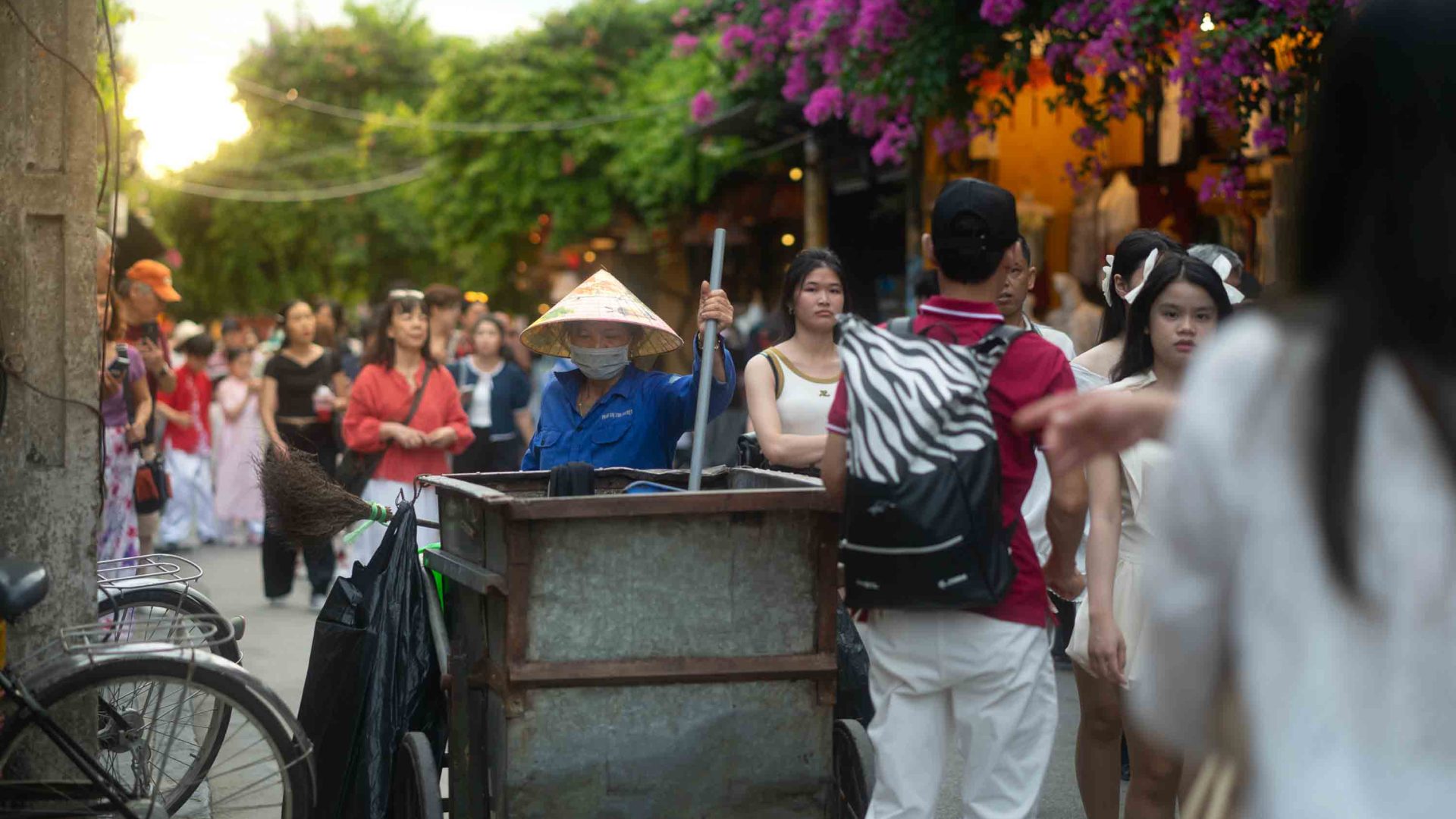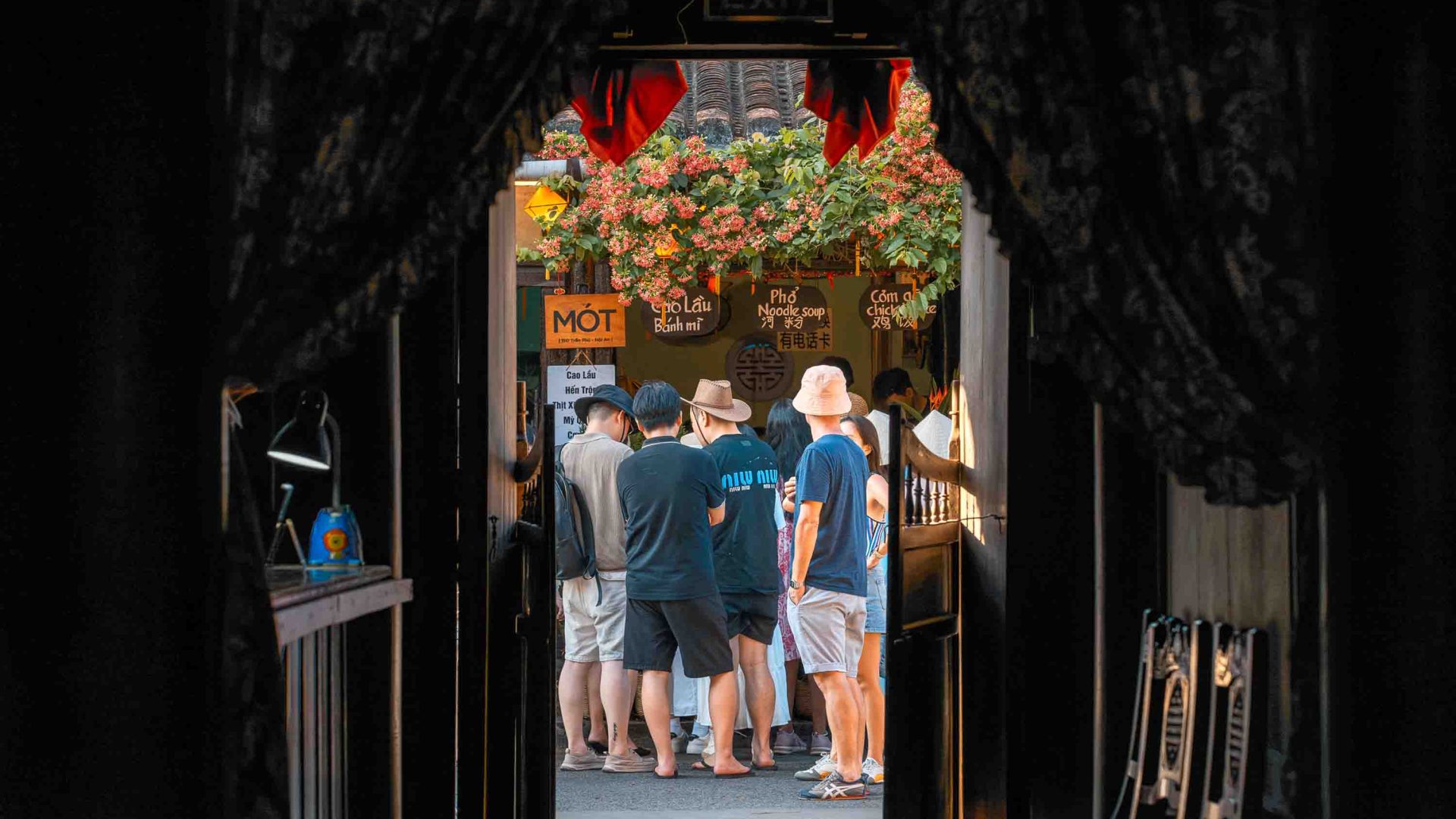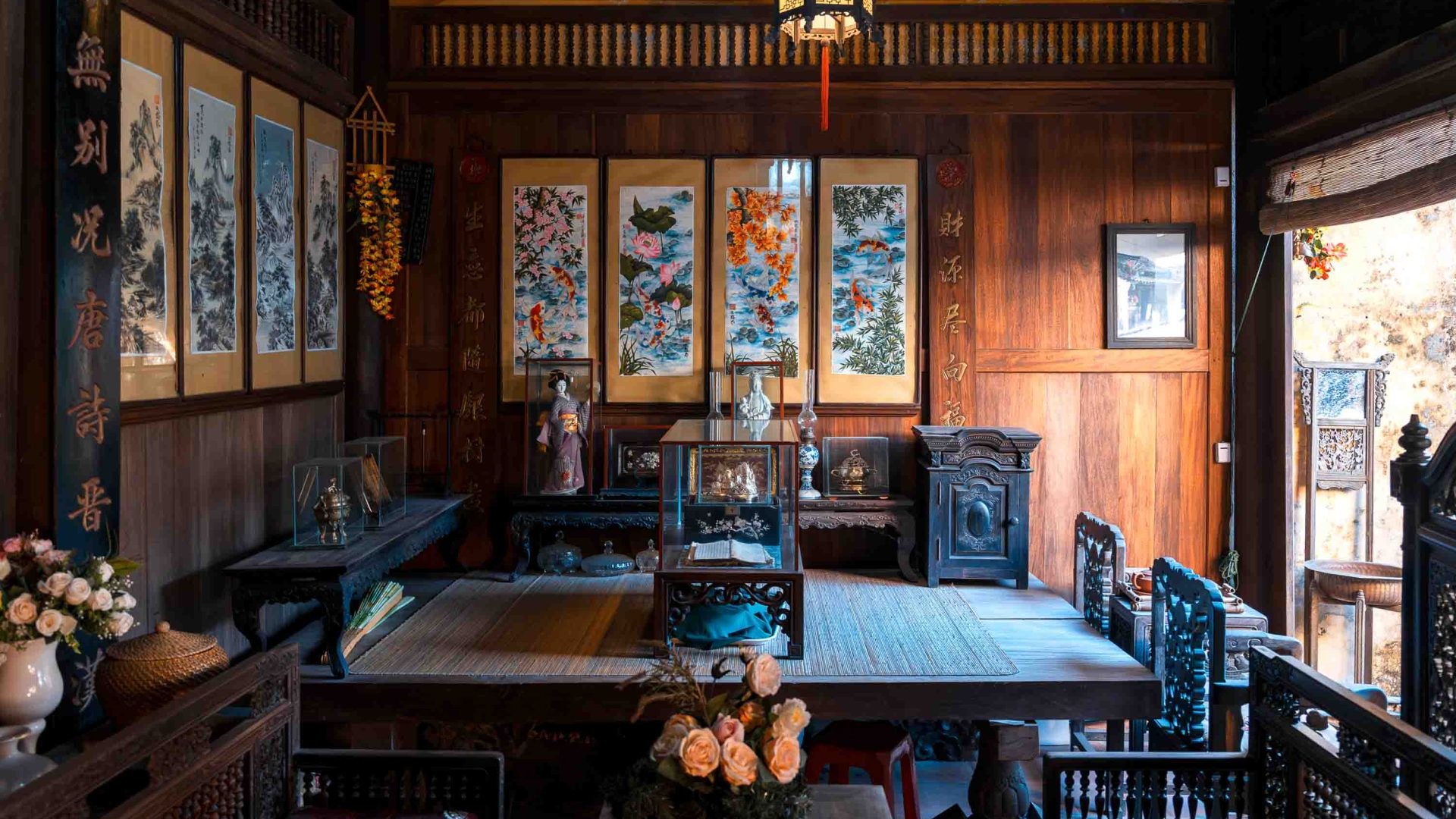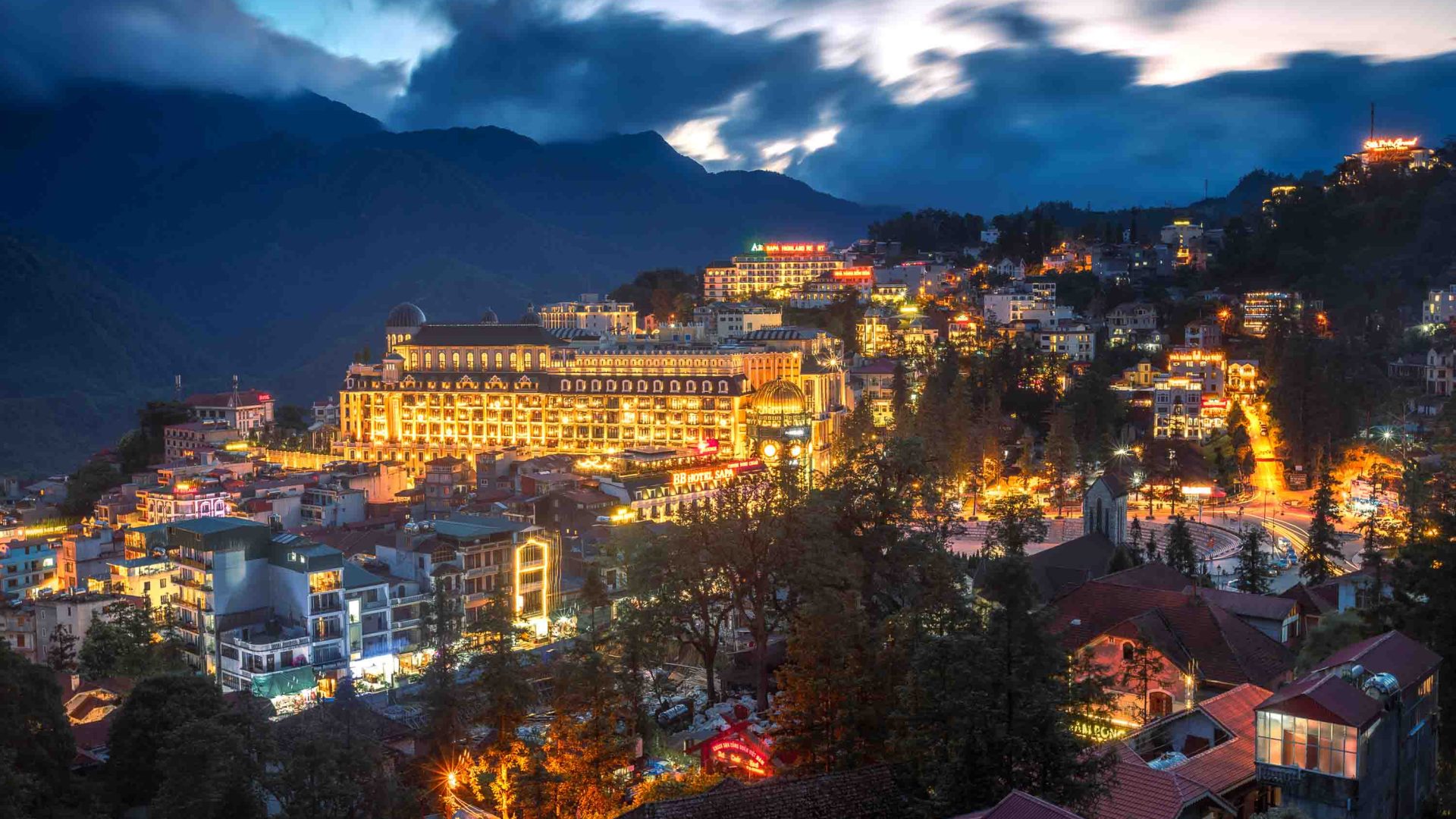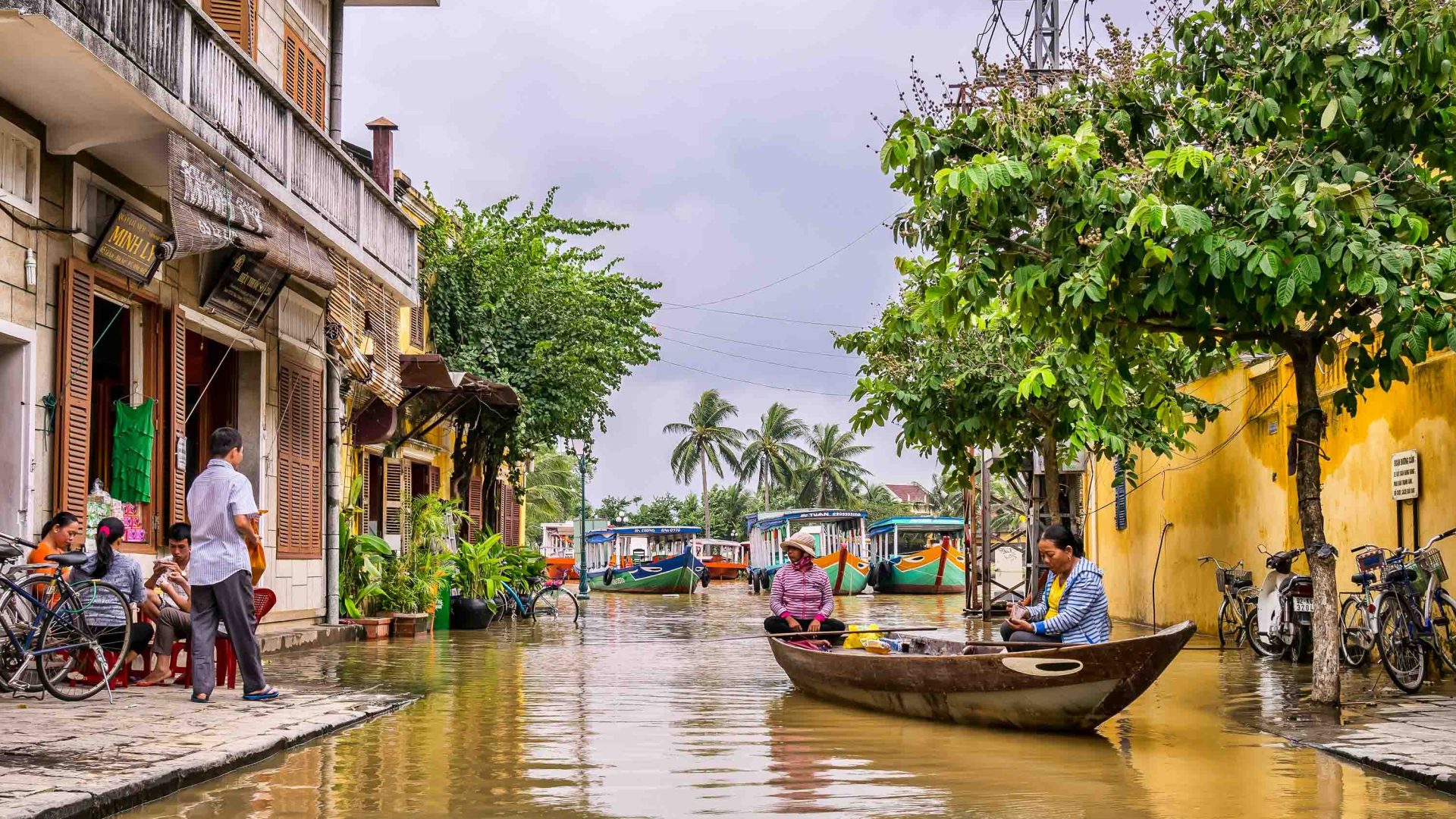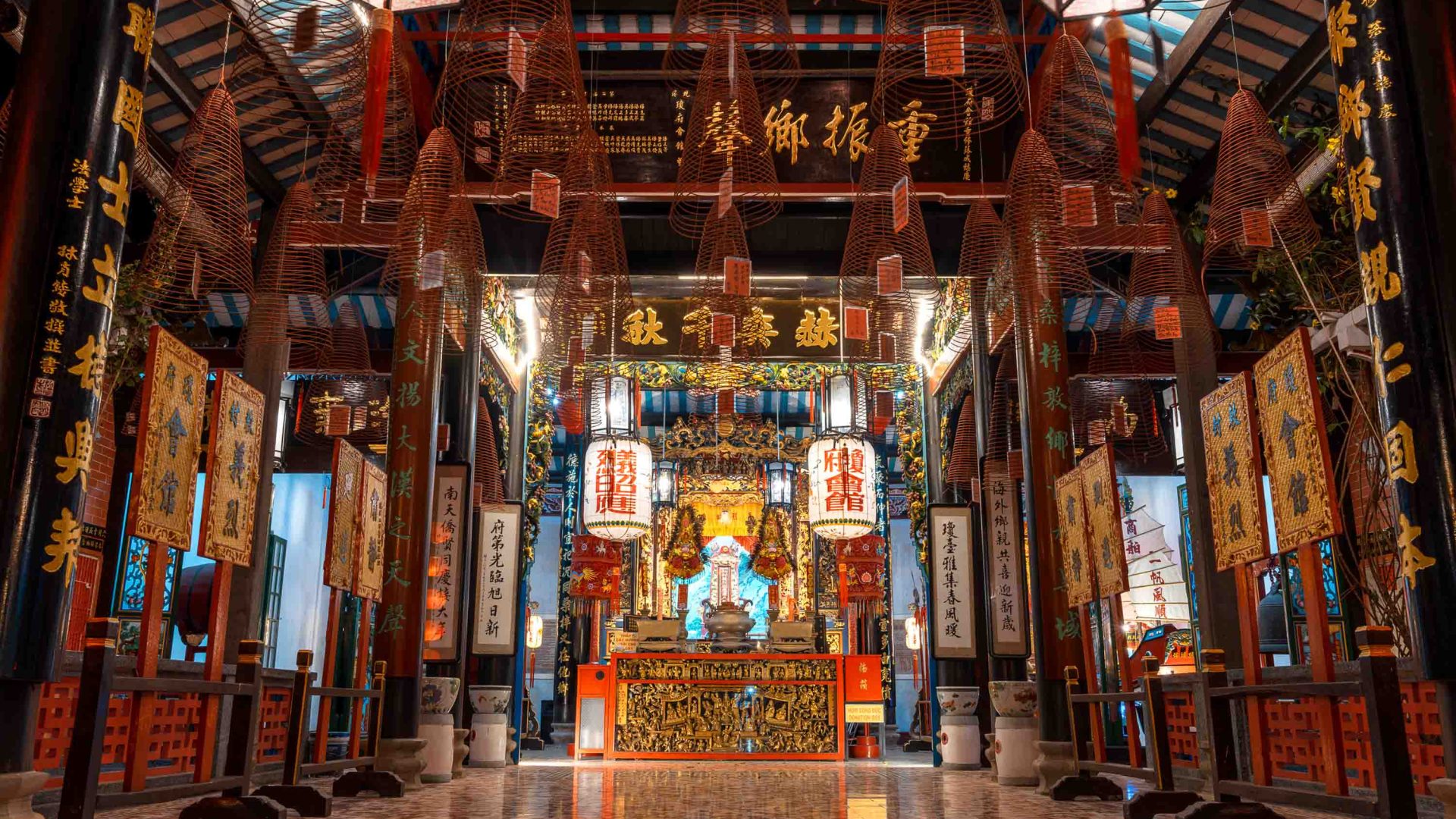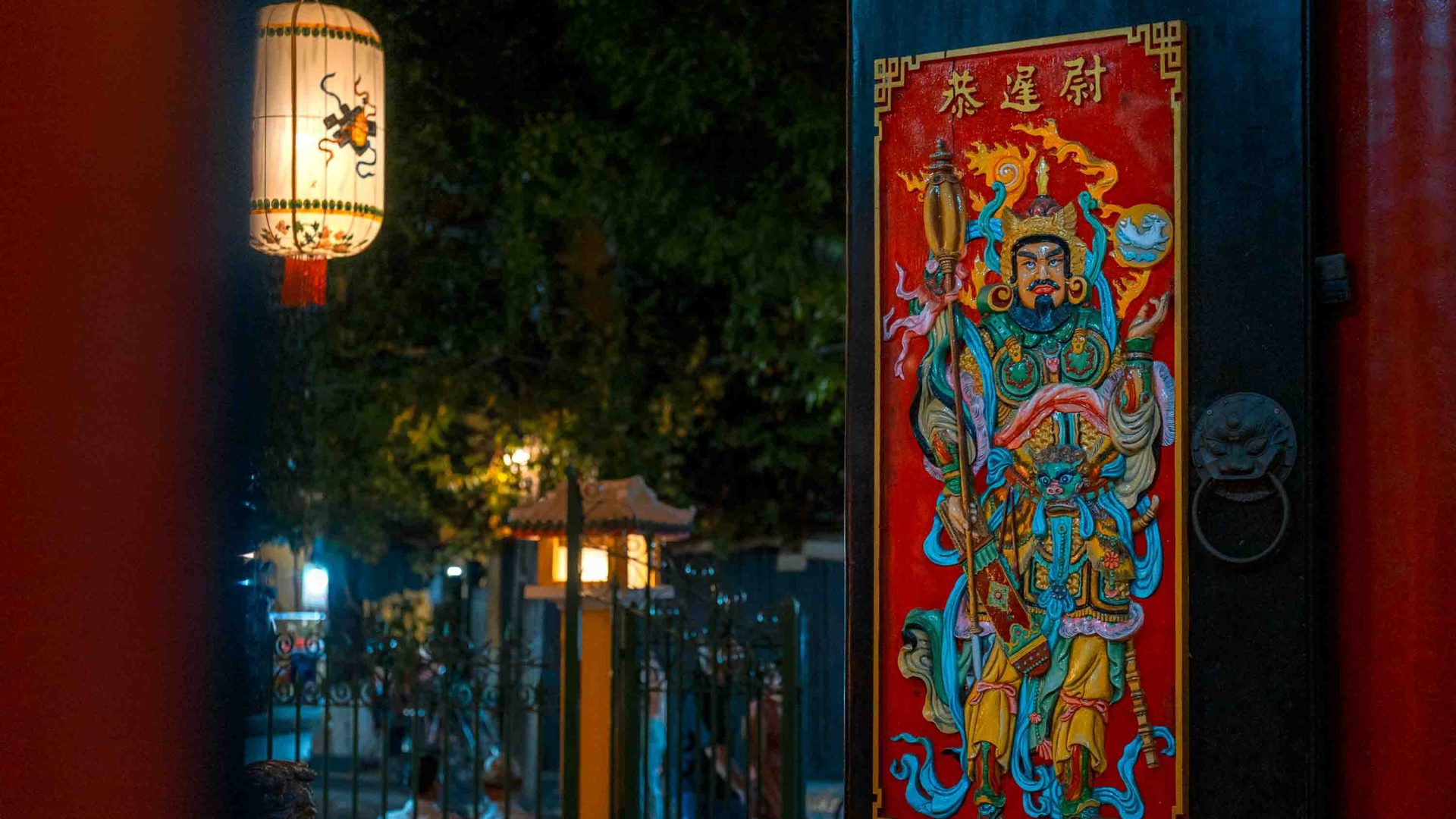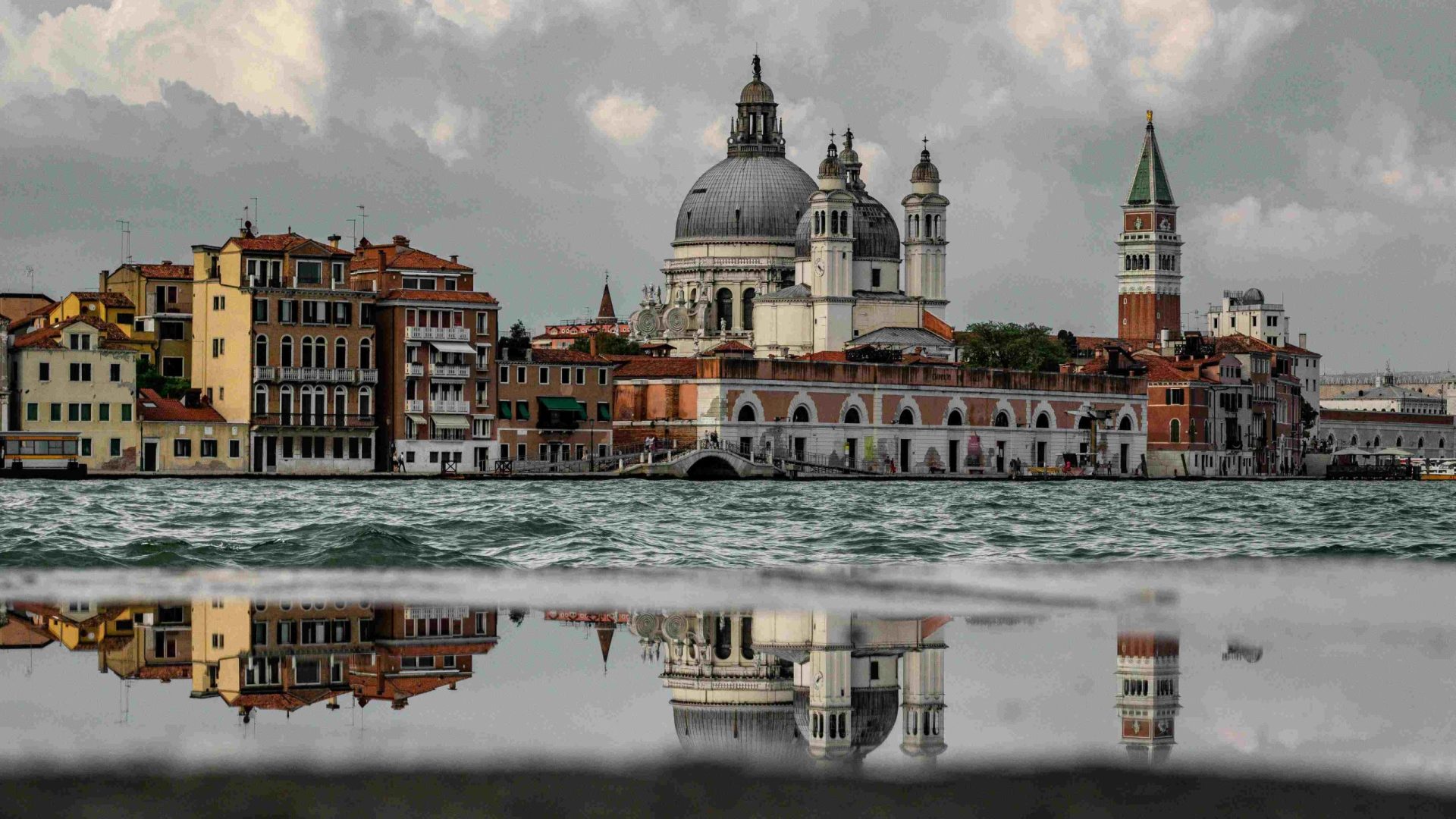“You think this is crowded?” Đặng Thị Bích Thuận quips with mock surprise. “You should see it on the weekends.”
After lugging over a tray of cơm gà (chicken rice), a Hội An specialty dish, the 69-year-old perches on a nearby plastic stool. My friends and I are bà Thuận’s only customers, which affords her one of her favorite pastimes: Mildly offensive banter.
Catching me shovel an overloaded spoonful of yellow rice and pulled chicken into my mouth, her face melts into a wrinkled grin. “On the weekends, Hội An is so packed that only slim people can squeeze through the streets—you wouldn’t stand a chance.”
I’ve visited Hội An dozens of times over the last two decades, and a ribbing from bà Thuận, who has served cơm gà for 30 years, has become a highlight. Each time we meet, she forgets who I am and asks how I found her restaurant, which hides in a quasi-ancient house on the edge of the old town. After sensing some rapport, she begins throwing shade as spicy as her homemade chili jam.
In more recent years, I’ve developed another Hội An habit: Irritation at the number of tourists. In 1999, UNESCO inscribed Hội An’s old town, a centuries-old international trade port in Quảng Nam province, a World Heritage site. Since this recognition, Hội An has experienced a ninefold increase in visitor numbers. My indignation is of course entirely unreasonable—I am a tourist, too, after all—but that doesn’t provide much solace.
